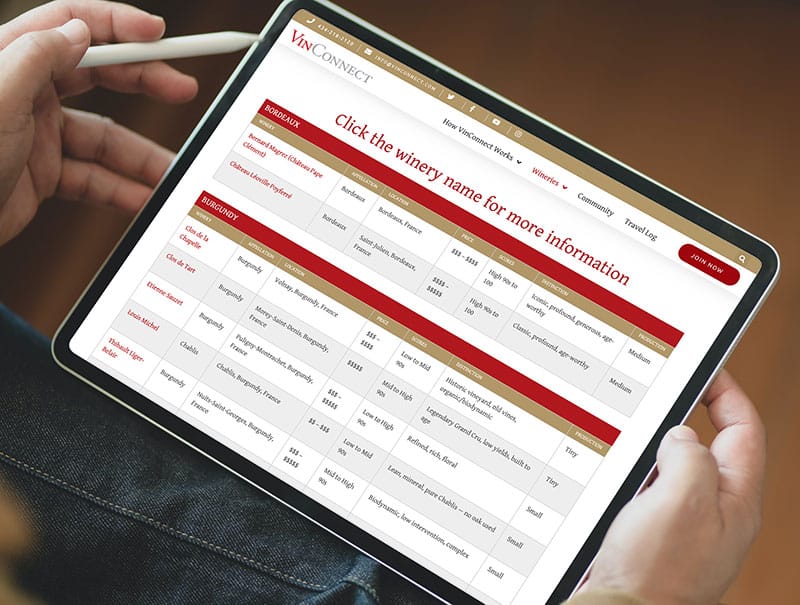I just returned from doing my first set of wine tasting visits in Spain, and I must say, I was very impressed. While I’ve done several trips to Burgundy, the Rhone, the Piedmont and Tuscany, it’s fair to say I didn’t have much of a picture in my mind of what to expect from Spainish “wine country.” Perhaps you don’t either, which is why I decided to put together this brief post, as I had a wonderful time and thought it might be helpful to share some high level thoughts.
Like France, Spain has several different wine regions, but really three of them are the most prominent and developed. In Spain, those would be Rioja, Ribera del Duero, and Priorat/Penedes.

I spent a few days in Rioja and Priorat, but while my comments specifically reflect those regions, I think they’re probably generalizable. Here they are:
1) Spain is beautiful. Not that that ought to be big news, but as Americans I think we generally think of France first (at least in terms of European wine travel), and Italy second. It’s easy for most folks to conjur up a mental picture of the countryside in France or Italy, but I think perhaps Spain may be a bit fuzzier. I found the regions I was in to be every bit as beautiful as their counterparts in France and Italy, with mountains, rolling hills, beautiful villages, castles on hills, a church in every town, etc.
2) Spain has wonderful people. Given the poor state of the Spanish economy, I’ll admit to being just a little concerned about public safety and people’s general attitudes. But not only did I see nothing that made me uncomfortable, I thought that the people were quite friendly and really went out of their way to make travelers feel welcome. I think they view tourism as a key strategic industry, and are all working together to provide visitors a great experience. As an example, one night in Rioja the waitress at my hotel’s restaurant offered to drive a family of four home in her own car rather than have them walk several blocks in the rain. Now that’s service…
3) Spain is modern. Again regarding the difficult economic circumstances, I had some concerns before arriving about the state of their transportation infrastructure, but I couldn’t have been more wrong. Perhaps as a result of significant government spending trying to revive the moribund economy, I found immaculate highways, pristine tunnels and state-of-the-art trains. And not much traffic on them at all…
4) Spain is inexpensive. Having spent the prior week traveling and tasting in France it’s easy to make a direct comparison, and Spain was an incredible value across the board. Everything from hotel rooms to meals to even gasoline was 20 – 40% cheaper for the comparable quality relative to France. In wine parlance, the quality/price ratio of Spain travel far exceeded that of France. I had no idea…
5) Spain has siesta. I’ll be honest, the concept of arranging my schedule around the fact that most stores and services are closed every afternoon from roughly 2 – 4pm seemed incredibly inconvenient for your productivity-inclined author. But after a couple of days getting used to it, I actually enjoyed the opportunity to slow down and live with a little less urgency. I found it akin to being in Hawaii — the attitude and culture is infectious, and I soon found myself lounging in the afternoons (it can be too hot outside to want to do much anyway) and then reemerging in the evening for a drink, walk, and late dinner the way the locals do it.
6) Spain makes great wine. While I was a bit surprised by the number and range of wineries in the regions I traveled to, I can say without equivocation that the overall quality of the best wines was on par with the best of the rest of the world. There is plenty of great terroir, many 80-100 year-old vineyards, and dozens of passionate winemakers pursuing the best of both traditional and state-of-the-art techniques, all of which combine to make some extremely impressive wines. I definitely have a better appreciation for what’s being made now in Spain, and plan to allocate some more space to it in my own cellar now that I have much more context for understanding what goes on there and why.
In sum, the Spain portion of my two-week trip was excellent, and I was a bit surprised I enjoyed it so much. Having not had much expectation going in perhaps I was ripe to be impressed, but I found it just as beautiful, less crowded, slower paced, and offering every bit as good wine and food as the more traveled regions in France and Italy. In addition, the top wine regions are close to other great tourist cities — Rioja is just over an hour from San Sebastien, and Priorat is about the same distance from Barcelona. I highly recommend making some time for a trip to these regions the next time you consider heading to Europe to travel and taste great food and wine. And now that VinConnect has many relationships and some expertise in that region, just let us know and we’ll be happy to share some recommendations for wine, food and lodging if that would be helpful…


